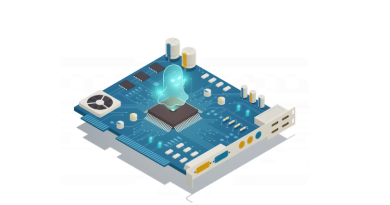What are Communication Systems? Working, Types and Applications
What are Communication Systems? Working, Types, and Applications
Communication systems transmit and receive information over a distance using various devices and media. Information can be in various forms: voice, audio, video, text, data, etc. Devices can be in multiple forms, such as radios, televisions, cell phones, computers, etc. Media can be in various forms, such as electromagnetic waves, optical fibers, wires, etc.
Communication systems can be classified into various types based on different criteria, such as:
- The type of information: analog or digital
- The type of modulation: amplitude modulation (AM), frequency modulation (FM), phase modulation (PM), etc.
- The type of multiplexing: time division multiplexing (TDM), frequency division multiplexing (FDM), code division multiple access (CDMA), etc.
- The type of transmission: simplex, duplex, or half-duplex
- The type of network: point-to-point, broadcast, or multicast
Communication systems have many advantages over other methods of information transfer and exchange, such as:
- Higher speed: Communication systems can transfer information faster than other methods by using appropriate devices and techniques, such as high-frequency signals, high-bandwidth channels, compression algorithms, etc.
- Higher quality: Communication systems can improve the quality of information by using appropriate devices and techniques, such as error correction codes, encryption algorithms, noise reduction filters, etc.
- Higher capacity: Communication systems can accommodate more information by using appropriate devices and techniques, such as multiplexing schemes, access schemes, modulation schemes, etc.
- Higher flexibility: Communication systems can adapt to the changes and variations in the demand and supply of information by using appropriate devices and techniques, such as feedback control loops, adaptive modulation, dynamic routing, etc.
How do Communication Systems Work?
Communication systems work by applying various principles and techniques of electrical engineering to information. Some of the most common concepts and methods used in communication systems are:
- Signal processing: This is the process of manipulating or transforming signals using various devices and techniques, such as filtering, amplifying, sampling, quantizing, encoding, decoding, etc. Signal processing can enhance, compress, modulate, demodulate, multiplex, demultiplex, encrypt, decrypt, etc., signals for various purposes and applications.
- Modulation: This is the process of changing one or more parameters of a carrier signal (such as amplitude, frequency, phase, etc.) according to a message signal (such as bits or symbols). Modulation can transmit or receive information over a channel (such as radio waves, optical fibers, wires, etc.) that may not be suitable for the message signal itself.
- Multiplexing: This is the process of combining two or more signals into one signal by using a common resource (such as time, frequency, code, etc.). Multiplexing can increase a channel’s capacity or efficiency by allowing multiple users or sources to share the same channel.
- Transmission: This is the process of sending or propagating a signal from one point to another over a channel using various devices and techniques (such as antennas, transmitters, receivers, amplifiers, etc.). Transmission can be affected by various factors or phenomena that may degrade or distort the signal, such as attenuation, noise, interference, reflection, refraction, etc.
- Reception: This is the process of receiving or detecting a signal from a channel using various devices and techniques (such as antennas, receivers, amplifiers, filters, etc..) Reception can involve various operations or functions that may recover or extract the information from the signal, such as demodulation, demultiplexing, decoding, decryption, etc.
What are the Types and Applications of Communication Systems?
Communication systems can be classified into various types based on different criteria, such as:
- The type of information: analog or digital
- The type of modulation: amplitude modulation (AM), frequency modulation (FM), phase modulation (PM), etc.
- The type of multiplexing: time division multiplexing (TDM), frequency division multiplexing (FDM), code division multiple access (CDMA), etc.
- The type of transmission: simplex, duplex, or half-duplex
- The type of network: point-to-point, broadcast, or multicast
Communication systems have many applications in various fields and domains, such as:
- Telecommunication: Communication systems transmit and receive voice, audio, video, text, data, etc., over long distances using various devices and systems, such as radios, televisions, cell phones, satellites, optical fibers, etc.
- Computing: Communication systems are used to process and store information using various devices and systems, such as computers, laptops, tablets, smartphones, memory cards, flash drives, etc.
- Networking: Communication systems are used to connect and communicate between various devices and systems using various protocols and standards, such as Ethernet, Wi-Fi, Bluetooth, TCP/IP, HTTP, etc.
- Sensing: Communication systems are used to sense and measure various physical quantities or parameters using various devices and systems, such as sensors, transducers, cameras, microphones, radars, sonars, etc.
- Control: Communication systems are used to regulate and optimize various processes and systems using various devices and systems, such as controllers, actuators, switches, relays, etc.
How can you learn more about Communication Systems?
If you are interested in learning more about communication systems, you can check out these resources:
- [Communication Systems – an overview | ScienceDirect Topics]: A web page overviews communication systems and their components and concepts.
- [Communication Systems | Coursera]: An online course that covers the fundamentals of communication systems, such as signal processing, modulation, multiplexing, transmission, reception, etc.
- [Communication Systems Engineering | edX]: An online course that covers the analysis and design of communication systems using various methods and tools, such as Fourier analysis, probability theory, information theory, etc.
- [Communication Systems | MIT OpenCourseWare]: A free online course that covers the theory and practice of communication systems using various topics and examples, such as analog and digital modulation, channel coding, source coding, multiple access, etc.
Frequently Asked Questions (FAQs)
1. What is a communication system?
- A communication system is a set of interconnected devices or components that transmit and receive information or data between individuals, entities, or locations.
2. How do communication systems work?
- Communication systems work by encoding information into a suitable form, transmitting it through a medium, receiving and decoding it at the destination, and ensuring error correction and data integrity.
3. What are the key components of a communication system?
- A typical communication system includes a transmitter, a communication channel or medium, and a receiver.
4. How is information encoded in communication systems?
- Information can be encoded into various forms, such as electrical signals, electromagnetic waves, digital bits, or analog waveforms, depending on the type of communication system.
5. What is the role of modulation in communication systems?
- Modulation is varying a carrier signal’s characteristics, like amplitude, frequency, or phase, to carry information signals efficiently over a communication channel.
6. What are the primary types of communication systems?
- Common types include wired communication systems (e.g., telephone lines), wireless communication systems (e.g., Wi-Fi, cellular networks), and satellite communication systems.
7. How does digital communication differ from analog communication?
- Digital communication uses discrete data symbols (bits) for encoding, while analog transmission uses continuous signals.
8. Can you explain the significance of protocols in communication systems?
- Protocols are rules and conventions that govern data exchange and communication between devices, ensuring compatibility and standardized communication.
9. What are the applications of communication systems in daily life?
- Communication systems are used in telecommunications, the internet, radio, television, smartphones, and various data communication services.
10. How do communication systems enhance global connectivity?
- Communication systems facilitate global connectivity by enabling long-distance voice, data, and video transmission, fostering international business, education, and collaboration.
11. What is the importance of error correction in communication systems?
- Error correction techniques ensure that transmitted data is received accurately, improving data reliability and quality.
12. Are there security measures in communication systems?
- Yes, encryption and authentication methods are used to secure data and ensure privacy in communication systems, particularly in sensitive applications like online banking and government communication.
13. How does satellite communication work?
- Satellite communication involves sending signals to and from satellites in orbit to provide wide-area coverage, making it valuable for television broadcasting, global positioning, and long-distance communication.
14. What is the future of communication systems with emerging technologies?
- Emerging technologies like 5G, Internet of Things (IoT), and quantum communication are expected to revolutionize communication systems by providing faster speeds, lower latency, and greater connectivity.
15. What skills are essential for professionals working with communication systems?
- Skills in network protocols, signal processing, digital communication, and knowledge of wireless technologies are vital for professionals in the field of communication systems.


